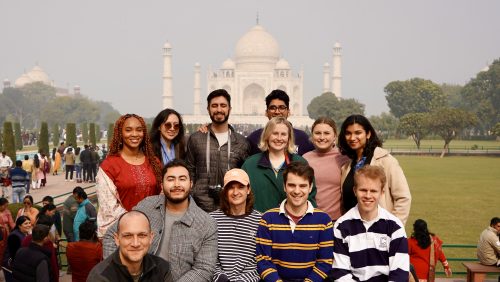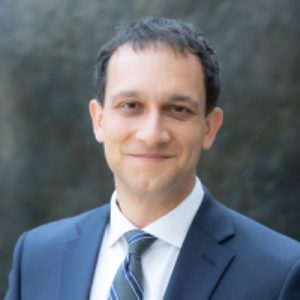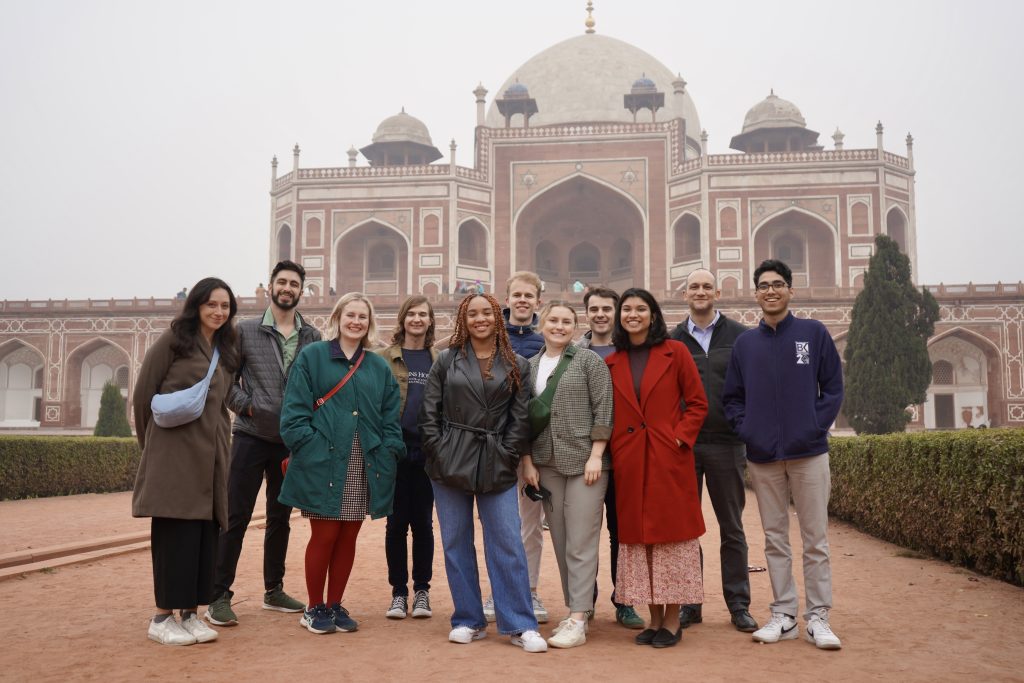
Joshua White Faculty Spotlight
Professor of Practice of International Affairs, SAIS; Director of the U.S.-ASEAN and U.S.-Pacific Institutes for Rising Leaders; Gupta-Klinsky India Institute Faculty Steering Committee Member
 “This has been a very positive few years in the US-India relationship, and it’s a relationship that’s likely to continue being important to both governments. There’s a lot of demand and interest, so I’m excited to keep working.”
“This has been a very positive few years in the US-India relationship, and it’s a relationship that’s likely to continue being important to both governments. There’s a lot of demand and interest, so I’m excited to keep working.”
Dr. Joshua White had extensive working knowledge of both India and the government before he started his role as a professor at the Johns Hopkins School of Advanced International Studies (SAIS). Previously a Senior Advisor and Director for South Asian Affairs at the National Security Council at the White House, he also held positions at the Pentagon and the Stimson Center, a DC-based think tank with a strong South Asia program.
“I spent a lot of time at the White House on the US-India relationship, from senior political engagements, where I was lead planner for Prime Minister Modi’s visit in 2016, to trade topics, to defense and intelligence. I saw those relationships from a very high level,” White said. “When I came back to SAIS as a member of the faculty, I wanted to spend time teaching and researching with a focus on the US-India relationship.”
“India is fascinating because it’s huge and is charting its own way in the international system with a diverse array of partners.”
Dr. White’s interest in India started before work in Washington DC. He frequently traveled to India and did a fellowship at the Institute for Defense and Strategic Analyses, the Indian Ministry of Defense’s think tank in Delhi when he was working on his PhD.
“I did a lot of work on the US-India defense relationship when I worked at the Pentagon. Under then-Deputy Secretary Ash Carter, there were several new initiatives on defense cooperation and technology,” White said. “I wanted to work on the U.S.-India defense relationship, and I was there at the ground floor of some of the early cooperation programs.”
He notes that some of the biggest challenges in cooperation come with the US and India just trying to navigate how to effectively partner with each other. It’s an especially tricky minefield, but one he thinks India is ready for.
“Neither the US government nor US companies are going to just hand over advanced technologies to India. However, India does have some comparative advantages,” White said. “India has a tremendous talent pool coming out of its top universities, innovation advantages in software and robotics and other domains, and India is focused on finding creative applications to technologies that will help it advance its developmental agenda. That’s where India can develop reciprocity and contribute to the partnership.”
“India is, in many different domains, a laboratory for innovation. In the defense area, too, India is working to promote innovation, investing significantly in its own defense industrial base, and diversifying its defense partners while developing more high-technology products.”
Dr. White’s current research project explores India’s defense technology relationship with the United States, as well as India’s other key defense partners, including Russia, France, and Israel. “This is something increasingly relevant to US and Indian lawmakers amid concerns over about the prospect of Sino-Indian conflict along the border or in the maritime domain,” he said.
This research includes a historical dimension, analyzing the growth and evolution of India’s defense industrial base over the last 20 years. This includes a close look into the rise of the private sector in defense production in India, examining how India structures its defense relationships with its main partners, as well as its acquisition of high-technology products for defense.”
“It’s a structural look at the Indian defense market and how India is trying to indigenize its capabilities and cultivate a new and dynamic private sector. And then, of course, all of these intersect with India’s technology ambitions, and help to define the opportunities that are available to India and the United States to collaborate in ways that advance their common geopolitical aims.”
“Our student work is trying to build up a cohort of young experts in the United States who will study and perhaps contribute to India’s technology ambitions and defense innovation efforts throughout their careers.”
 Dr. White notes that while much of what Hopkins has done in India has been related to health topics, he’s excited to see there has been a new focus by the university on AI, space, and emerging technology domains. He recently led a group of graduate students from SAIS to India. Together, they looked at U.S.-India private sector space collaboration and saw how artificial intelligence governance policies were being formulated by the state and private sector stakeholders.
Dr. White notes that while much of what Hopkins has done in India has been related to health topics, he’s excited to see there has been a new focus by the university on AI, space, and emerging technology domains. He recently led a group of graduate students from SAIS to India. Together, they looked at U.S.-India private sector space collaboration and saw how artificial intelligence governance policies were being formulated by the state and private sector stakeholders.
“Every time we go to India, we meet with people from the foreign ministry and the science technology ministry, and senior officials at the state level. We try to get outside of boring conference rooms,” he said. “Recently, our students met with a range of space startups and that were building satellites and worked to understand the emerging space innovation ecosystems in India.”
 Dr. White and his students traveled to Delhi and Bengaluru for these interviews, and then presented their findings in an invite-only presentation at the Center for Strategic and International Studies in DC for a group of government officials and NGO experts who work on India.
Dr. White and his students traveled to Delhi and Bengaluru for these interviews, and then presented their findings in an invite-only presentation at the Center for Strategic and International Studies in DC for a group of government officials and NGO experts who work on India.
“The students selected excellent topics. I learned a lot about India’s technology and innovation ecosystems simply through the travel and the meetings. Some of students from a previous study trip have gone on to work on India-related policy topics here in Washington,” he explained. “It was quite clear to all of us that India is not merely going to adopt foreign models of technology innovation or governance; it is committed to blazing its own trail. That makes this an exciting time to study technology policy in India, and build bridges between scholars and innovators in both countries.”
Photo Credit: Aldrin Ballesteros